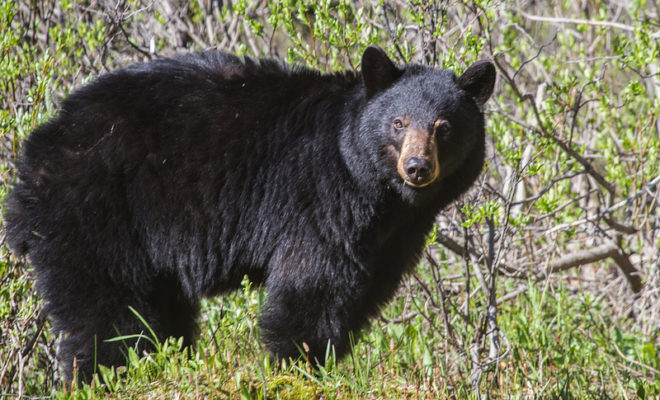Once upon a time in Texas, black bears were plentiful. They had a wide range and distribution across the state. In fact, certain habitats were so plentiful that they gave rise to substantial populations of grizzly bears, particularly in central and west Texas. According to early settlers of the region, who relied upon cattle ranching for both income and food, bears were a major threat to their enterprise.
Over the years, the bear populations in Texas have dwindled. About 100 years ago, east Texas also boasted a healthy population of black bears. Urbanization and the introduction of invasive species of plants is what many biologists believe drove the native populations of black bears out of the region. Currently, this area of the state is not considered native to black bears, unlike the states of Oklahoma, Arkansas, and Louisiana.
Photo: Flickr/David A. Mitchell
East Texas, though, does provide prime habitat for black bears. Since 2010, sightings of black bears in east Texas has been on the rise. Most of these sightings are written off as hoaxes, or pet bears of private citizens that have escaped. At best According to Texas Parks and Wildlife, the only substantial populations of black bears in the state exists in the Big Bend Region. However, with four confirmed sightings in 2016 alone, both state and federal agencies are beginning to pay attention.
Photo: Flickr/Marie Hale
One explanation is that natural habitats are returning. With successful initiatives such as the Big Thicket Restoration Project, among others, many invasive plant species are being slowly eradicated from the region, thereby allowing for native species to thrive once again. As a result, vast swaths of east Texas woodlands are beginning to resemble the forests they were 100 or more years ago. Could this restoration lead to an established population of black bears in the region?
Another possible explanation, according to wildlife biologists, is that the rise in sightings is due to young male Louisiana Black Bears on the move in search of new territories and mating opportunities.
If indeed the bears are returning to east Texas, could their habits of migration lead to a spike in the populations in the Hill Country? Time will tell.




